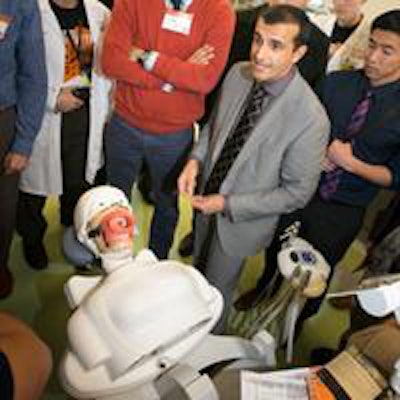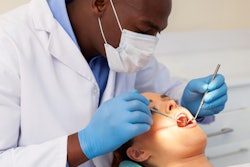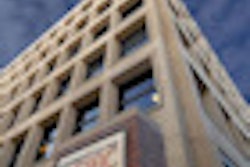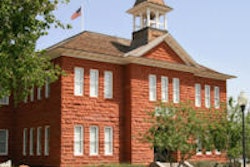
As DrBicuspid.com reported in March, the University of the Pacific has opened a new $151 million campus on Fifth Street in San Francisco to house the Arthur A. Dugoni School of Dentistry, along with an audiology clinic, other school programs, and even space rented to a San Francisco-based tech firm. With recent reports about the number of dentists in California nearing retirement age, looking at how the next generations of California dentists are being trained seemed relevant.
 Arthur A. Dugoni School of Dentistry opened its new campus in San Francisco in March. All images courtesy of the Dugoni School of Dentistry.
Arthur A. Dugoni School of Dentistry opened its new campus in San Francisco in March. All images courtesy of the Dugoni School of Dentistry.
Patrick J. Ferrillo Jr., DDS, the dean of the dental school spoke with DrBicuspid.com about the impetus for the construction of the new site and how dental education is changing.
The new location contains about 50,000 more square feet for the dental school compared with its previous building in San Francisco, Dr. Ferrillo said.
"The additional space is primarily in our two clinical floors and the Simulation Laboratory, as well as in some support areas related to building code. Our dental operatories are about 10% larger than our existing operatories, and patients will be 'toe-in' versus 'toe-out' in layout," he said.
The advantages of this are that the school's approximately 10,000 patients will have greater privacy and the dental students will have more room to learn.
At a basic level, he said, the school's most recent review of its strategic plan led to the pursuit and development of the new building.
 The school's new dental operatories are about 10% larger, so patients will have greater privacy and students will have more room to learn.
The school's new dental operatories are about 10% larger, so patients will have greater privacy and students will have more room to learn.
The school is working to implement the Pacific Dental Helix Curriculum, Dr. Ferrillo said. According to the school's website, this approach "places a strong focus on active learning and critical thinking by integrating across multiple disciplinary areas and using small-group case-based learning as a signature pedagogy."
"This approach [the curriculum] requires flexible learning spaces for small-group, case-based instruction, as well as for the eight group dental practices within our main clinic that more closely resemble the private practices in which our students will ultimately practice," Dr. Ferrillo said.
He also cited benefits to the patient population, such as improved access in the downtown location and redesigned clinics.
While he said that new technology, per se, wasn't a main driver in the decision to relocate the school, it nevertheless presented an opportunity to enhance the technological options in areas such as clinical education, practice management, and patient education.
"One example is the new technology in our new preclinical Simulation Laboratory," Dr. Ferrillo said. "This is an area where first-year students learn hand skills, explore materials, and practice basic procedures on teeth."
 In the new preclinical Simulation Laboratory, first-year dental students learn hand skills, explore materials, and practice basic procedures. The school has partnered with KaVo Kerr Group to develop a custom-designed manikin.
In the new preclinical Simulation Laboratory, first-year dental students learn hand skills, explore materials, and practice basic procedures. The school has partnered with KaVo Kerr Group to develop a custom-designed manikin.
The school partnered with the KaVo Kerr Group to develop a custom-designed manikin -- the first of its kind in use at any dental school in the world, he said. On the clinical and patient sides of new technology, the school is adding new digital check-in kiosks for patients, electric handpieces, patient education monitors in waiting areas, and expanding the use of handheld digital x-rays, electronic health records, and classroom presentation and educational technologies.
The school's enrollment is "stable," and they have "no plans" to increase class sizes in any of its programs in the foreseeable future, Dr. Ferrillo said.
"Our goals with the new facility are not to increase our enrollment, but rather create a world-class new facility for our programs," he said. "We are launching a new residency program in endodontics that starts in July 2014 with three residents per class. The other program class sizes should remain unchanged."
Dr. Ferrillo is optimistic about the school's future.
"I believe our school will continue to attract many bright students from around the world. We have high-quality programs, excellent faculty, and now an innovative and inspiring new facility. I'm very excited about what the future holds for both Pacific Dugoni and our profession."



















